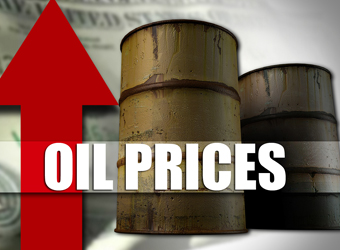Oil prices edged up early on Thursday, clawing back some ground after losses in the previous session.
Traders said the market was range-bound as falling crude inventories provided price support while high output was capping gains.
Brent crude futures, the international benchmark for oil prices,were at $50.43 per barrel at 0101 GMT, up 16 cents, or 0.3 percent, from their last close.
U.S. West Texas Intermediate (WTI) crude futures were at $46.88 a barrel, up 10 cents, or 0.2 percent.
The slight gains followed a more than one percent fall in the previous session. Data published late on Wednesday by the Energy Information Administration (EIA) showed that commercial U.S. crude oil stocks have fallen by almost 13 percent from their peaks in March to 466.5 million barrels, well below this time last year.
Data published late on Wednesday by the Energy Information Administration (EIA) showed that commercial U.S. crude oil stocks have fallen by almost 13 percent from their peaks in March to 466.5 million barrels, well below this time last year.
“If inventory declines continue at this pace, stocks will fall back below the five-year average in around two months,” said William O’Loughlin, investment analyst at Australia’s Rivkin Securities.
“The pace of the declines indicates that the OPEC production cuts are having an effect, although the current oil price suggests that the market is skeptical about the longer-term prospects for rebalancing of the oil market,” he added.
ANZ bank said the market on Wednesday seemed “to focus on the rise in (U.S.) production”, which jumped by 79,000 barrels per day (bpd) to 9.5 million bpd last week, its highest level since July 2015, and 12.75 percent above the most recent low in mid-2016.
Some traders said that the soaring U.S. output is eroding efforts by the Organisation of the Petroleum Exporting Countries which, together with non-OPEC producers like Russia, has pledged to restrict output by 1.8 million barrels per day (bpd) between January this year and March 2018 to tighten the market and prop up prices.
Brent prices are down by almost 12 percent since the start of the cuts in January.
Source: Reuters


